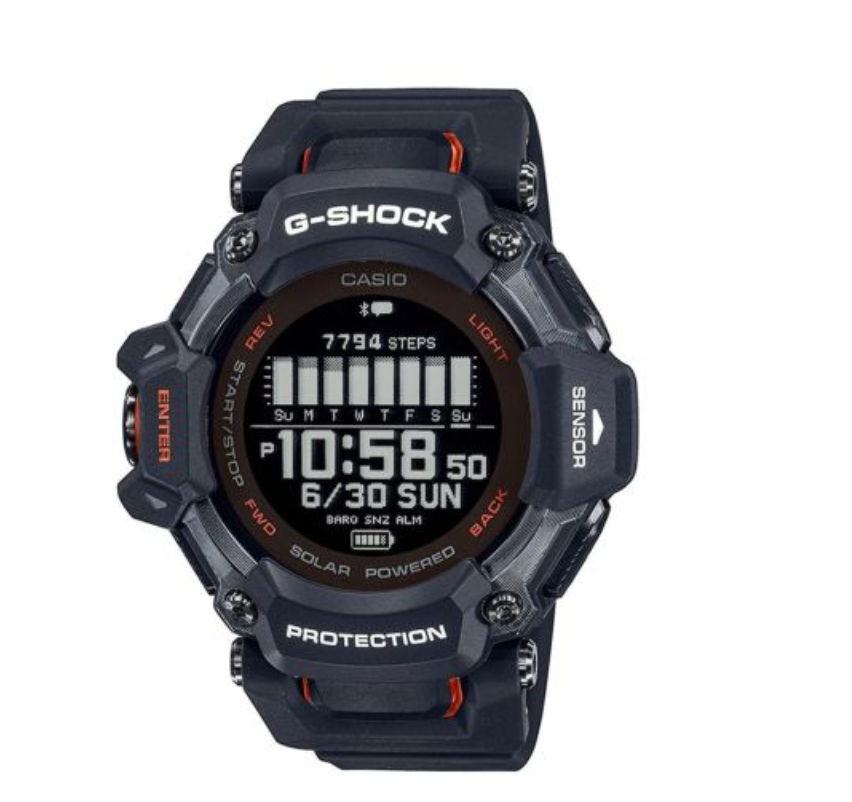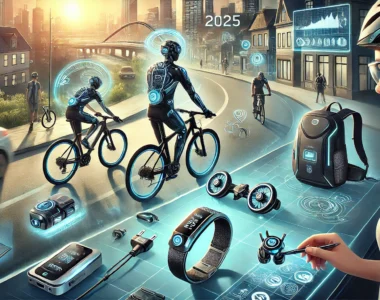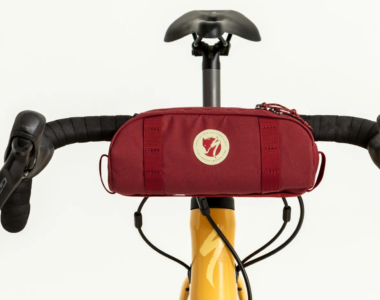No products in the cart.

G-Shock GBD-H2000 Honest Review: A Titan in Durability but Is It the Right Fit for Cyclists?
The G-Shock GBD-H2000 from Casio emerges as the brand’s ambitious stride into the bustling fitness watch arena. Esteemed for their unmistakably resilient designs, the G-Shock series has been synonymous with durability. The GBD-H2000 seeks to uplift the legacy of its predecessor, the GBD-1000, by weaving in an array of sport-centric functionalities including comprehensive activity monitoring, heart rate tracking, and sleep analysis. However, the pressing question remains: amidst a sea of specialized smartwatches, does the GBD-H2000 offer the tailored experience cyclists seek?

Craftsmanship of the G-Shock GBD-H2000
At its core, the GBD-H2000 was crafted with versatility in mind, boasting a design that’s not solely confined to sports but rather, life’s broad spectrum. It utilizes a quintet of buttons for navigation, a decision that may raise eyebrows given the contemporary tilt towards touchscreen interfaces. This choice manifests as a slight hiccup in usability, particularly under the constraints of cold weather gear, pointing out the conspicuous absence of a touchscreen.
Far from being pigeonholed as a cycling watch, the GBD-H2000 flaunts its multifaceted tracking capabilities, spanning running, swimming, to cycling. However, its activity range might seem limited when juxtaposed with the extensive tracking repertoire of an Apple Watch.
The watch impresses with a diverse array of widgets, from vital signs like heart rate and blood oxygen levels to navigational aids such as altimeters. Yet, accessing these metrics is less straightforward than one might hope, demanding a departure from the home screen and a subsequent trawl through available options—a process that could test one’s patience.

The Riding Experience with the GBD-H2000
The GBD-H2000 maintains the iconic G-Shock aesthetic, a design choice that divides opinion. With a case width of 52mm and a thickness nearing 20mm, it stands out on the wrist—not always for the right reasons, especially when navigating the aerodynamic intricacies of cycling.
Despite its formidable appearance, the watch surprises with its lightness, a mere 61 grams, courtesy of biomass plastics and a resin strap. This material choice, while environmentally commendable, might fall short of the premium feel offered by metallic alternatives.
Health and Fitness Tracking Prowess
The essence of a sports watch lies in its ability to track, and here, the GBD-H2000’s GPS tracking shines with precision. However, the wrist-based heart rate monitor’s reliability comes into question, especially under the rigorous demands of cycling, suggesting potential inaccuracies due to device displacement.
Navigational Capabilities and Battery Life
Mapping functionalities are noticeably absent in the GBD-H2000, a limitation that could deter route enthusiasts. On the flip side, its solar charging feature stands out, significantly extending battery longevity and minimizing the need for frequent recharges—a commendable feat.

User Interface and Customization
The pursuit of personalization encounters hurdles with the GBD-H2000, offering limited watch face customization. This, coupled with an unintuitive app experience, complicates what should be a seamless interaction, marking a significant area for improvement.
Assessing Value and Concluding Thoughts
Priced at a competitive $399/£379, the GBD-H2000 finds itself in the smartwatch market’s mid-range. Yet, when directly compared to its contemporaries, its value proposition becomes blurred. The watch’s robust build and accurate tracking functionalities are overshadowed by its lack of cycling-specific features and a cumbersome user interface.

Specifications at a Glance
- Dimensions: 59.6 × 52.6 × 19.4mm
- Weight: 61g
- Water Resistance: Up to 200 meters
- Battery Life: Up to 19 hours with GPS usage
- Connectivity: Bluetooth
The G-Shock GBD-H2000 emerges as Casio’s bold stride into the fitness watch landscape, bringing forth a blend of durability and technological advancement. This model continues the G-Shock legacy of resilience, augmented with features aimed at the modern athlete. However, a closer examination reveals a nuanced picture where its strengths are also countered by notable drawbacks. Here’s what sets the GBD-H2000 apart, and where it falls short.
Reasons to Buy
+ Unmatched Battery Longevity: The GBD-H2000 shines with an exceptional battery life, capable of reaching up to 19 hours while utilizing GPS tracking. This robust endurance supports prolonged activities without the hassle of frequent recharging, ideal for adventurers and athletes alike.
+ Precision GPS Tracking: Accuracy in activity tracking is paramount, and the GBD-H2000 delivers with highly precise GPS functionality. This ensures detailed and accurate recording of movements, crucial for performance analysis and improvement in various sports.
+ Resilient Design: True to the G-Shock name, the GBD-H2000 is crafted to withstand the rigors of active use. Its design effectively protects against impacts, making it a reliable companion for outdoor and rigorous activities where durability is key.
Reasons to Avoid
– Limited Activity Recognition: Despite its robust build and tracking capabilities, the GBD-H2000 offers a narrower range of activity tracking compared to some competitors. This limitation may deter users engaged in diverse sports and exercises seeking comprehensive data.
– Complex Navigation: Both the device and its companion app suffer from cumbersome navigation. The absence of a touchscreen and the occasionally unresponsive buttons can frustrate users seeking seamless access to functionalities and data.
– Absence of Touchscreen: The lack of a touchscreen interface places the GBD-H2000 behind many contemporary smartwatches. This omission affects the ease of interaction, making the user experience less intuitive than it could be.
– Bulky Form Factor: The watch’s considerable size may not appeal to everyone. While its bulk is synonymous with durability, it may prove cumbersome in certain sports or everyday wear, particularly for those who prefer a more discreet presence on their wrist.
In essence, the G-Shock GBD-H2000 stands as a testament to Casio’s commitment to durability and precise tracking. Its battery life and GPS accuracy are commendable, catering well to the needs of outdoor enthusiasts and athletes who prioritize these features. However, its limitations in activity tracking, user interface, and design could be significant for those seeking a more versatile and user-friendly smartwatch experience.



